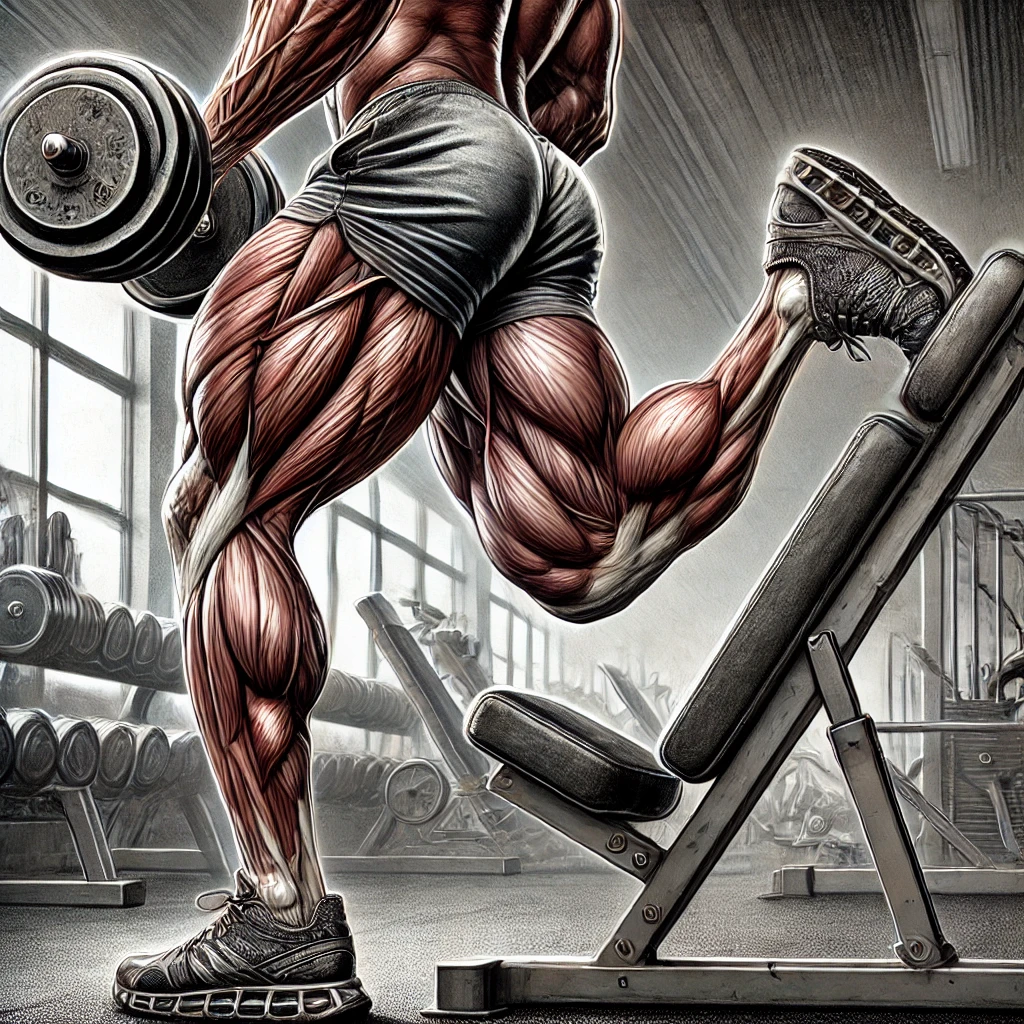Last Updated on September 30, 2022
Calf exercises are often overlooked, but they’re essential for building lower leg strength, improving stability, and enhancing overall athletic performance. Among the many exercises targeting this area, the Standing Calf Raise with Dumbbell is one of the most effective and accessible. Whether you’re a beginner or a seasoned fitness enthusiast, this exercise can help you achieve defined, powerful calves.
In this expanded guide, we’ll explore the Standing Calf Raise with Dumbbell, including its benefits, step-by-step instructions, common mistakes to avoid, and tips for maximizing your results. By the end, you’ll have a comprehensive understanding of how to incorporate this exercise into your workout routine effectively.
Benefits of Standing Calf Raise with Dumbbell
Before diving into the exercise, let’s look at the key benefits of adding it to your regimen:
- Build Calf Strength
This exercise primarily targets the gastrocnemius and soleus muscles in your calves, helping to build strength and endurance in these critical areas. - Improve Stability and Balance
By performing calf raises with dumbbells, you engage stabilizing muscles in your feet, ankles, and lower legs, improving balance and reducing the risk of injuries. - Enhance Athletic Performance
Strong calves are essential for activities like running, jumping, and sprinting. This exercise can enhance your explosive power and agility. - Accessible for All Levels
The dumbbell calf raise is a simple yet effective exercise that requires minimal equipment, making it suitable for gym-goers and home workouts alike. - Boost Aesthetic Appeal
Well-defined calves contribute to a balanced and muscular lower body, improving overall aesthetics.
Muscles Worked
The Standing Calf Raise with Dumbbell primarily targets the gastrocnemius, the larger, more prominent calf muscle, and the soleus, which lies underneath. These muscles work together to perform plantar flexion (pointing the toes downward) and support your body during activities like walking, running, and jumping. Additionally, the exercise engages stabilizing muscles in your feet, ankles, and core.
Equipment Needed
To perform the Standing Calf Raise with Dumbbell, you’ll need:
- Dumbbells: Choose a weight that challenges you without compromising your form.
- A Raised Surface: Use a sturdy block, step, or a few weight plates stacked together to allow for a greater range of motion.
How to Perform the Standing Calf Raise with Dumbbell
Follow these steps to execute the exercise with proper form:
Step 1: Set Up Your Equipment
- Place a block, step, or a stack of weight plates on the floor.
- Ensure the surface is stable to avoid slipping or tipping during the exercise.
Step 2: Position Yourself
- Grasp a dumbbell in each hand and let your arms hang naturally at your sides.
- Step onto the block so the balls of your feet are on the edge, with your heels hanging off.
- Stand tall with a straight back, keeping your core engaged.
Step 3: Lift Your Heels
- Slowly lift your heels as high as possible, pressing through the balls of your feet.
- Focus on squeezing your calf muscles at the top of the movement.
- Pause for 1-2 seconds at the peak to maximize the contraction.
Step 4: Lower Your Heels
- Gradually lower your heels back down until they’re below the level of the block.
- Feel the stretch in your calves as your heels drop.
- Avoid bouncing or letting gravity take over; control the descent.
Step 5: Repeat
- Return to the starting position and repeat for the desired number of reps.
- Aim for 3-4 sets of 12-15 reps, adjusting the weight or reps based on your fitness level.
Common Mistakes to Avoid
To maximize the benefits of this exercise and prevent injury, steer clear of these common mistakes:
- Using Momentum
Avoid bouncing at the bottom or rushing through reps. Instead, move slowly and with control to engage the muscles fully. - Neglecting Full Range of Motion
Ensure your heels drop below the block to stretch the calves and lift as high as possible for a complete contraction. - Improper Weight Selection
Using dumbbells that are too heavy can compromise your form, while weights that are too light may not effectively challenge your muscles. - Poor Posture
Keep your back straight and core engaged to avoid placing unnecessary strain on your lower back. - Skipping Warm-Up
Failing to warm up can increase the risk of injury. Perform light dynamic stretches or a few minutes of low-intensity cardio before starting.
Modifications and Variations
Depending on your fitness level and goals, you can modify or progress the exercise:
For Beginners
- Perform the exercise without dumbbells to master the movement and build initial strength.
- Use a stable surface for balance support if needed.
For Advanced Lifters
- Use heavier dumbbells to increase resistance.
- Perform single-leg calf raises to target each leg individually and improve balance.
Add Resistance Bands
- Incorporate resistance bands for added tension at the top of the movement.
Change Tempo
- Slow down the lowering phase (eccentric contraction) to increase time under tension, which enhances muscle growth.
Tips for Maximizing Results
- Focus on Mind-Muscle Connection
Concentrate on feeling your calves work during each repetition. This improves muscle engagement and effectiveness. - Progress Gradually
Increase the weight or number of repetitions over time to continue challenging your muscles and promoting growth. - Combine with Other Calf Exercises
Add variety to your routine by including seated calf raises, donkey calf raises, or jump rope exercises. - Stretch and Cool Down
Stretch your calves after the workout to improve flexibility and reduce soreness. - Maintain Consistency
Perform calf raises 2-3 times per week as part of your lower body or full-body workout routine.
Frequently Asked Questions
1. How much weight should I use?
Start with a light weight to master the form. As you build strength, gradually increase the weight to challenge your calves without compromising technique.
2. Can I do this exercise without a block?
Yes, but using a raised surface allows for a greater range of motion, enhancing the stretch and contraction in your calves.
3. Is this exercise suitable for beginners?
Absolutely! Beginners can perform this exercise without weights or use lighter dumbbells to build confidence and strength.
4. How can I target different parts of the calves?
To emphasize different areas, change your foot position:
- Point toes inward to target the outer calves.
- Point toes outward to focus on the inner calves.
Workout Plan Featuring Standing Calf Raises
Here’s a sample workout to integrate the Standing Calf Raise with Dumbbell into your routine:
Lower Body Day
- Squats: 4 sets of 8-12 reps
- Romanian Deadlifts: 4 sets of 8-10 reps
- Lunges: 3 sets of 10-12 reps per leg
- Standing Calf Raise with Dumbbell: 4 sets of 12-15 reps
- Leg Press Calf Raise: 3 sets of 15-20 reps
Conclusion
The Standing Calf Raise with Dumbbell is a versatile and effective exercise that deserves a spot in your workout routine. By strengthening your calves, you’ll improve your lower body aesthetics, balance, and overall performance in physical activities. Remember to focus on form, progress gradually, and stay consistent for the best results.
Incorporate this exercise into your fitness plan, and enjoy the benefits of stronger, more defined calves!







